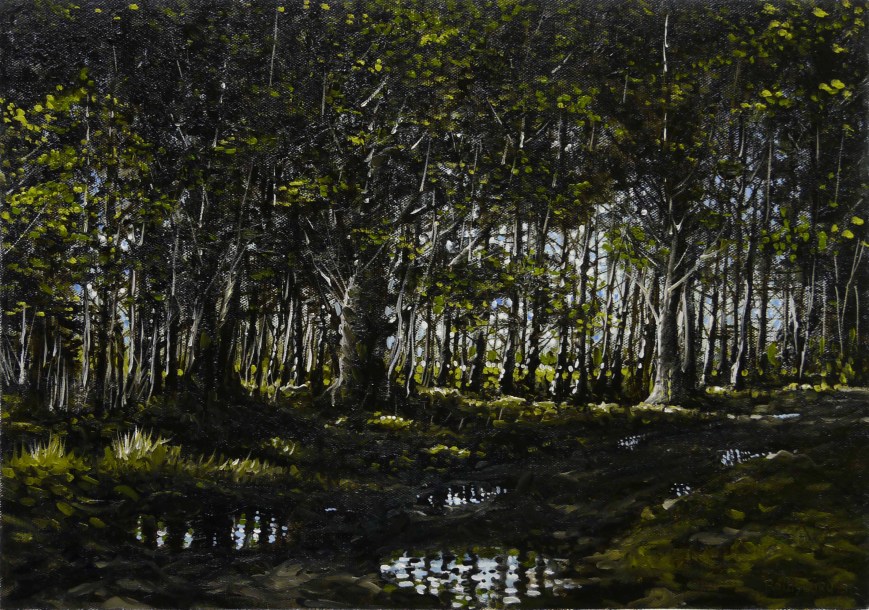This is the finished painting I started a few days ago. The last post mentioned the issues with Liquin and deep shadows (see here). I was exploring the idea that lines (not outlines) more than shapes trigger a sense of realism in a painting. I was aware of this in drawings and graphical work where the line does not actually outline the objects but suggest shapes.
I did not record the painting of this picture because of the messing around with Liquin. The colours used were the usual Burnt Sienna & Raw Umber (red), Yellow Ochre (yellow) and French Ultramarine (blue). Black and white and a strong green, Chrome Green Light were also used. The second painting, which was affected by Liquin, I have recorded, so far, and I will record the finishing when it dries. I will be able to use ‘glazes’ because the painting will be dry – that will be something different from recent paintings.
I have included the pictures below to illustrate the thing about lines and their ability to convey a realistic impression. Both were done about 30 years ago. One is a scraperboard, where the black is scraped off – like reverse drawing. The other is an oil painting produced with long bristled, narrow round brushes. The technique involved using low boiling point petroleum solvents. This material would evaporate within seconds of applying the paint. In a way, it was similar to watercolours. The colours were built up with multiple lines layered on top of each other. If they were applied quickly enough they would blend together. The technique was limited to brightly lit subjects not like the painting above.


